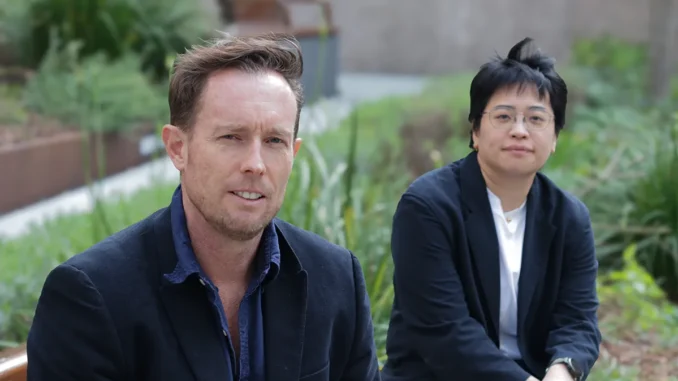
WLA recently had a chat with Angus Palmer (Director) and Ka-Po Yung (Senior Associate Director) who are both based in London, about Benoy and how their studio operates.
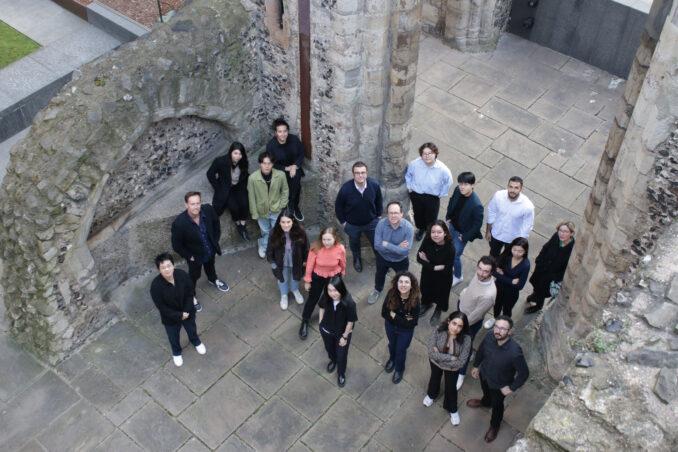
WLA | Can you tell us about your design firm?
AP – Benoy is a global design firm that’s been around for almost 80 years. We’ve got studios spread out across Europe, the Middle East, and Asia. Over the past few years, our landscape architecture team has really grown—we’re now over 45 strong around the world, with about 25 of us based in the London studio, working in landscape and urban design.
Before 2023, our team actually went by a different name—Uncommon Land—but we’re now fully part of Benoy. We work closely with other design disciplines within the company, like architecture, masterplanning, interiors, signage and wayfinding, and we also collaborate with Pragma, our sister company, which focuses on market insights and data. It’s a pretty integrated setup, which makes for some really interesting projects.
WLA | What scales and regions does your multi-disciplinary design firm work in?
AP – Our work is certainly diverse in scale and geographies, from large-scale city and precinct masterplans to streets, plazas and parks all the way down to more intimate rooftop spaces, covering all aspects of landscape masterplanning and landscape design. What makes our work exciting is the highly collaborative approach we take—working closely with various disciplines at Benoy and partnering with other global architects and engineers.
In terms of geography, our work takes us to a variety of locations, which keeps things interesting, dynamic and ensures we’re always learning. In 2024, for instance, our London team worked across 17 different countries, while our Singapore and Hong Kong teams worked in 11 different countries.
Over the past couple of years, we’ve maintained a presence in the UK, India, and Africa, with over half of our work coming from the Middle East. However, what’s been particularly interesting recently is the shift towards emerging markets. Countries in Central Asia and parts of Eastern Europe, like Georgia, Uzbekistan, and Azerbaijan, have started to become really promising. These markets often have limited awareness of the value a landscape architect can bring, so it’s incredibly rewarding to showcase our expertise (once we have convinced them they need a landscape architect) to demonstrate how we can elevate their projects.
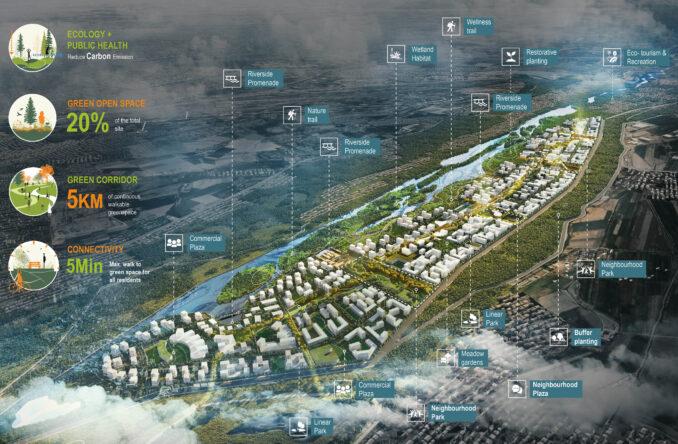
WLA | What is your approach to landscape design?
KY – There seems to be a significant shift with more people moving back to live in or near city centres, and this trend is driving a need for landscape architects to tackle the challenges of sustainable urbanism. Our work is incredibly diverse, spanning different scales and geographies, but we always aim to provide landscape design solutions that balance long-term viability with sustainable practices. It’s about integrating these solutions into urban spaces to address both sustainability and livability. The pandemic has been tough, bringing a lot of tragedy and disruption. But it’s also shown us how advanced technology can revolutionize urban environments. We’re moving towards smart cities where data and technology optimize urban life. This means looking at city-wide layers of green-blue infrastructure, using sustainable building materials and designs, and creating people-centric public spaces. It’s an exciting time for landscape and urban design!
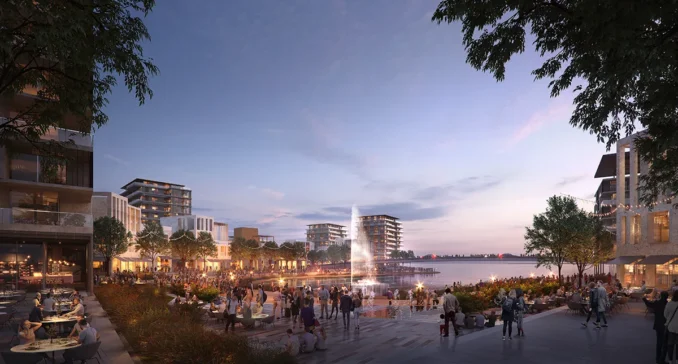
In our highly connected world, our approach to landscape design must be adaptive and innovative. What makes our work (… or job) truly fascinating is our talented team of landscape architects, urban designers, and planners who look at urban spaces holistically. We are visionary towards creating habitable spaces not only for ourselves but for our future generations, and our landscape design ethos had always been multifaceted – we think out of the box (… we are experimental!) yet there are certain policies/framework/regulations we must comply with. Landscape architecture is not just a superficial addition – through close collaboration with Benoy’s design disciplines, we are analytical and ethical to create long-term sustainable spaces through ecological, social, and economic integrated solutions, leveraging the interconnectedness of people and places. Beyond that, we infuse our landscape with deeper meaning, combining the art & culture, nature & nurture, aesthetics & functionality.
WLA | What does your week look like as a group of landscape architects in a multi-disciplinary environment?
AP – Working on international projects requires a lot of agility, so no two weeks are ever the same. We operate under a hybrid model—three days in the studio and two days working from home—which helps us strike a good balance between collaboration and focused work.
Studio days are all about connection, workshops, and cross-discipline collaboration, which is especially valuable for our less experienced staff. Mondays, in particular, tend to be focused on catching up with client requests from our Middle East projects, as their work week starts on Sunday.
When we work from home on Tuesdays and Fridays, the focus shifts more towards production, business development, and strategic planning. Thursdays are a bit different—those are our design review days, where we come together to focus on critical design discussions, and we usually follow that up with something social after work, which helps strengthen our team culture.
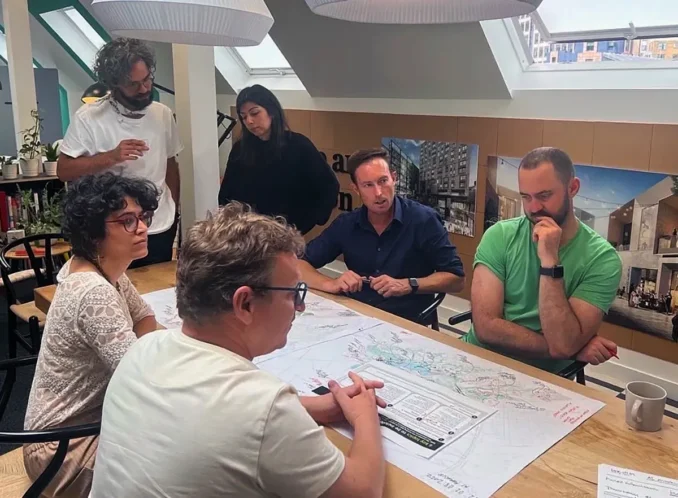
WLA | What do you try to incorporate in all your designs? (design principle, objective, idea)
KY– Having worked in Asia, the US, and the UK, there is no one design that solves all problems, though I have been very encouraging to our team to constantly push the boundaries of our profession and to continuingly question ourselves in this ever-changing world. It takes a balance of yin and yang to create a cohesive, balanced, yet meaningful habitable spaces. As we build an urban generation, designing and managing a resilient, sustainable built environment is key to securing a sustainable future. In this age of waste, the pressure on resources will continue to increase. By limiting energy consumption in buildings and reducing greenhouse gas emissions through innovative transport infrastructure, we as a team of outdoor creative creatures aim to create adaptable and long-lasting landscape designs that evolve over time.
WLA | What is a key issue that is facing the landscape architecture profession?
AP – Advocacy and a deeper understanding of our profession’s potential are crucial areas for continued growth. Having worked in Sydney, New York and now London,—while delivering projects across various geographies—my experience is that landscape architecture in the US is probably a decade ahead. This progress is supported by a broader awareness within the built environment of the value our profession brings. As the field continues to evolve, how we communicate and market our work is critical to securing a strong and influential voice at the table, not just with our design partners, but our clients and with government agencies.
On a global level, we’re also seeing some notable shifts of where the large scale projects are happening. While parts of Asia have started to slow down, the GCC region of the Middle East—especially Saudi Arabia—has become the epicentre for large-scale projects. The scale and ambition of projects in that region are unmatched right now.
Another significant change we’ve been experiencing is the growing role of technology in our business. Over the last couple of years, technology has become a major focus, and we’re fortunate to have our Head of Technology at Benoy actively engaged with our studio, staying on top of the latest trends. His insights and involvement have been instrumental in helping us stay ahead in an increasingly tech-driven landscape.
WLA | How do you see the future of landscape architecture?
KY – The future of landscape architecture is set to be dynamic and transformative. Landscape architects and urban designers must continue to advocate for our profession and collaborate to address the challenges and opportunities posed by climate change, particularly in emerging markets. Technological advancements will play a crucial role in this evolution, enabling us to push the boundaries of landscape architecture by optimizing designs, evaluating impacts, collecting and assessing data, and enhancing collaboration. This will help us tackle global challenges such as land extraction, fragmentation, and carbon emissions. Benoy, in collaboration with Pragma, leverages its multidisciplinary design expertise to integrate advanced analytics, research, and data into our landscape designs, enabling us to create solution-oriented outcomes to clients who favours longevity and adaptability in their product.
Thank you to Angus Palmer & Ka-Po Yung for taking the time to answer WLA’s questions.

Be the first to comment